
Manduca corallina is a moth of the family Sphingidae first described by Herbert Druce in 1883.
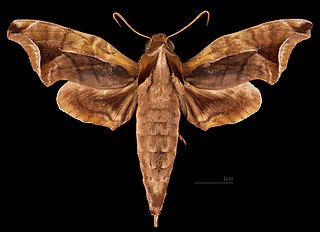
Enyo gorgon is a moth of the family Sphingidae.

Enyo lugubris, the mournful sphinx, is a moth of the family Sphingidae. It is found from Argentina and Paraguay to Uruguay, Venezuela, Guyana, Suriname, French Guiana, Colombia, Ecuador, Peru, Brazil and the West Indies through Belize, Guatemala, Honduras, El Salvador, Nicaragua, Costa Rica and Panama to Mexico and the United States, where it has been recorded from Arizona east to Florida and north to South Carolina. Strays have been recorded from Arkansas, north to Illinois, Michigan and New York.
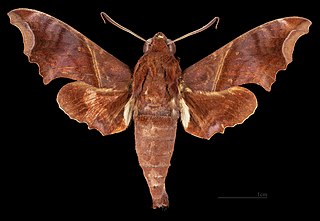
Enyo ocypete is a moth of the family Sphingidae. The species was first described by Carl Linnaeus in his 1758 10th edition of Systema Naturae. It is found from the southern United States, through Central America to Venezuela, Brazil, Peru, Bolivia, Paraguay and northern Argentina.

Eumorpha vitis, known as the vine sphinx, is a moth of the family Sphingidae.
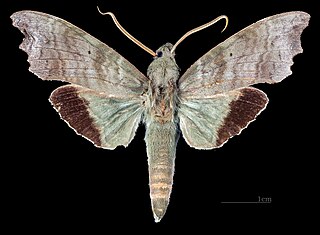
Aleuron chloroptera is a moth of the family Sphingidae. It was described by Maximilian Perty in 1833, and is known from southern Mexico, Brazil, Belize, Guatemala, Nicaragua, Costa Rica, Colombia, Peru, Bolivia, Venezuela, Guyana, Suriname, French Guiana, Paraguay, Argentina and Ecuador. It is probably also present in Uruguay, Honduras, El Salvador and Panama.
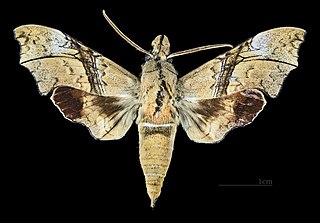
Aleuron iphis is a moth of the family Sphingidae. It was described by Francis Walker in 1856

Aleuron neglectum is a moth of the family Sphingidae. It was described by Walter Rothschild and Karl Jordan in 1903.
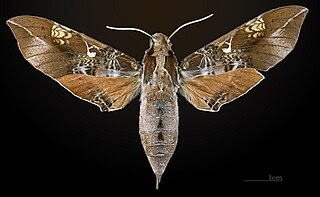
Callionima inuus is a species of moth in the family Sphingidae. It was described by Walter Rothschild and Karl Jordan in 1903.
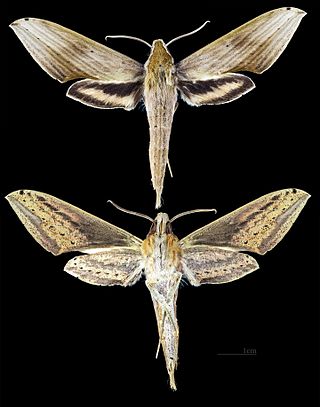
Xylophanes libya, the Libya sphinx, is a moth of the family Sphingidae. The species was first described by Herbert Druce in 1878. It is known from southern Texas, Mexico, Belize, Guatemala, Panama and from Venezuela south and west to Bolivia and Paraguay.
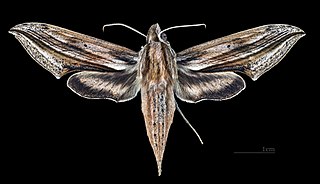
Xylophanes maculator is a moth of the family Sphingidae. It is found from Mexico and Belize to Ecuador and further south to Venezuela and Bolivia. The wingspan is 65–75 mm.

Xylophanes thyelia is a moth of the family Sphingidae. The species was first described by Carl Linnaeus in his 1758 10th edition of Systema Naturae.

Xylophanes titana is a moth of the family Sphingidae first described by Herbert Druce in 1878.

Enyo cavifer is a species of moth in the family Sphingidae. It was described by Rothschild and Jordan, in 1903.

Enyo taedium is a species of moth in the family Sphingidae. It was described by Schaus, in 1890.

Unzela japix is a moth of the family Sphingidae. It is found from Mexico to the Amazon basin. There are also records from Suriname and north-western and south-eastern Venezuela.

Madoryx bubastus is a moth of the family Sphingidae. It is found in Central America and South America, including French Guiana and Venezuela south to at least Bolivia and Argentina. It is also present in Mexico.

Pachygonidia subhamata is a moth of the family Sphingidae.
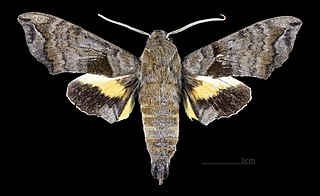
Perigonia ilus is a moth of the family Sphingidae first described by Jean Baptiste Boisduval in 1870.
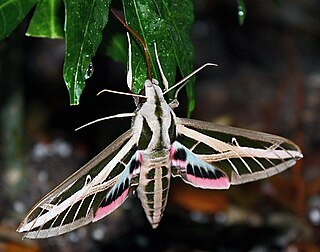
Eumorpha fasciatus, the banded sphinx, is a moth of the family Sphingidae. The species was first described by Johann Heinrich Sulzer in 1776.





















